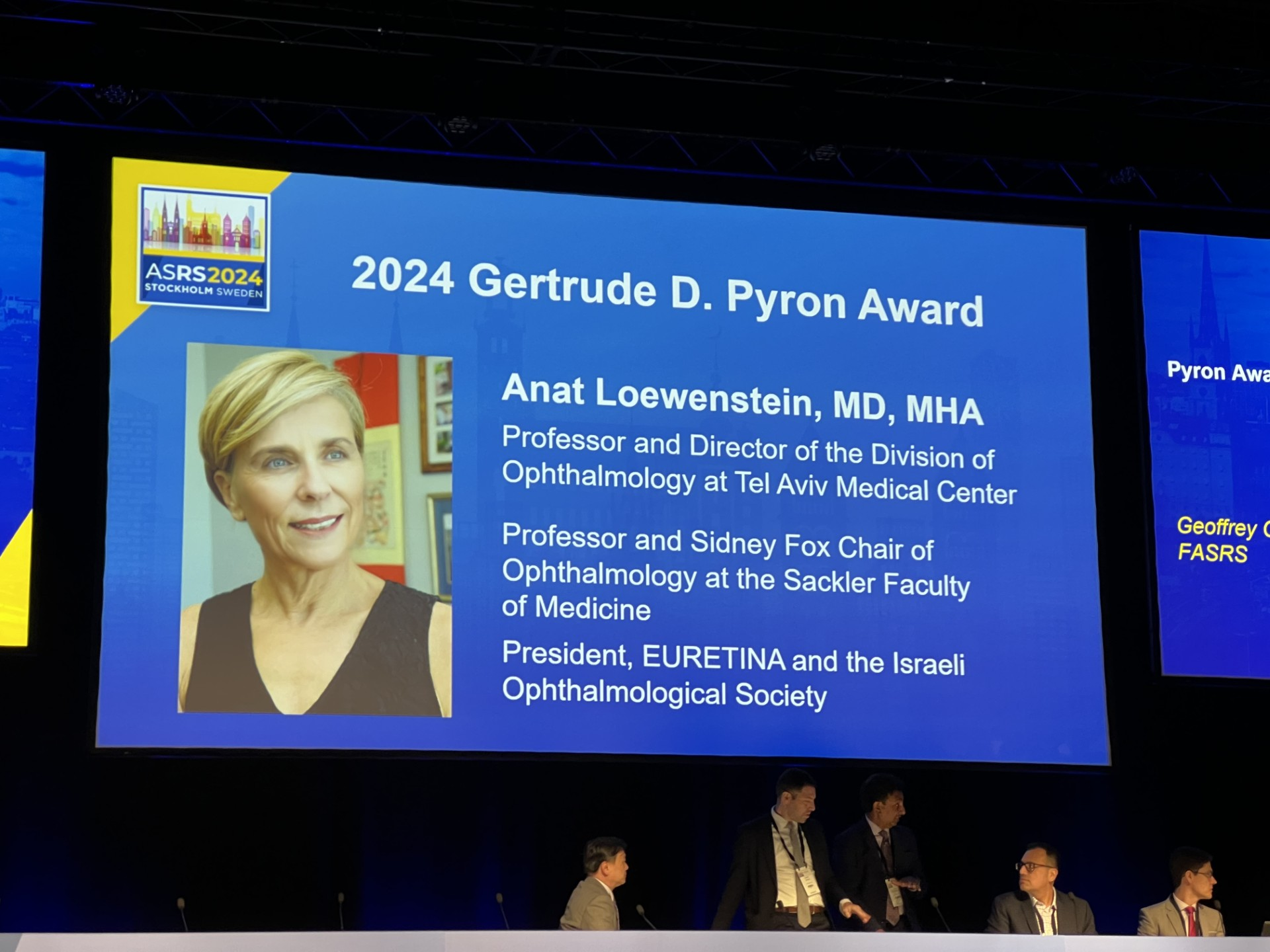Nikhil Bommakanti, MD
Wills Eye Hospital, Philadelphia, PA
RETINA Editorial Board Member Dr. Anat Loewenstein, MD, MHA was awarded the Retina Research Foundation’s 29th Annual Gertrude D. Pyron Award on Friday, July 19, 2024.
The Pyron Award was established by the Retina Research Foundation to recognize outstanding vision scientists whose work contributes to knowledge about vitreoretinal disease. The Retina Research Foundation was founded by the late Alice McPherson, MD.

Dr. Lowenstein is a renowned retina innovator, researcher, author, and mentor. She is a professor and director of the Division of Ophthalmology at Tel Aviv Medical Center, and vice president of the hospital at the Tel Aviv Medical Center. She is a full professor and the Sidney Fox Chair of Ophthalmology at the Sackler Faculty of Medicine. Dr. Loewenstein also serves as president of EURETINA and the Israeli Ophthalmological Society. She is the editor-in-chief of Case Reports in Ophthalmology and associate editor of Investigative Ophthalmology & Visual Science, European Journal of Ophthalmology, and Ophthalmologica. Dr. Lowenstein has published more than 500 peer-reviewed articles and multiple book chapters and serves as principal investigator for many clinical trials. Her numerous research interests include drug administration and retinal toxicity, early detection of macular degeneration, home monitoring of retinal disease, and augmented reality for vitreoretinal surgery.
![]()
Dr. Lowenstein explained that there is an unmet need for novel, nonsteroidal treatments for uveitic macular edema (UME), as UME may persist in approximately 40% of eyes despite control of inflammation, and the current mainstay of treatment, corticosteroids, have side effects. She explained that vamikibart (RG6179), a recombinant, fully humanized anti-IL-6 monoclonal antibody engineered for intravitreal administration and fast systemic clearance, showed promising exploratory phase 1 data. The purpose of this lecture was to present the study design of 2 parallel phase 3 trials of intravitreal vamikibart in UME due to noninfectious uveitis. IL-6 is a potential target to address the inflammatory cascade as it is upregulated during infection and inflammation, and is involved in angiogenesis, fibrosis, inflammation, and blood-retinal barrier integrity.
![]()
MEERKAT and SANDCAT are 2 identical, global, multicenter phase 3 studies which are randomized, double-masked, sham comparator-controlled trials intended to evaluate the efficacy, safety, and pharmacokinetics and pharmacodynamics of intravitreal vamikibart in patients with UME due to noninfectious uveitis. The 3 arms with 75 patients each include 2 doses of vamikibart and sham, which are administered every 4 weeks for 4 doses through week 12, followed by as needed dosing during weeks 20 through 48. Predefined rescue criteria allow for standard of care treatment for patients with worsening disease. The primary endpoint is the proportion of patients with a 15 or more letter gain in BCVA at week 16. Secondary endpoints include changes in BCVA and central subfield thickness, rescue medication requirements, adverse events, and concentrations of IL-6 and vamikibart in aqueous humor and serum. These parallel, global trials are ongoing.
Dr. Lowenstein closed by explaining that vamikibart represents a potential intravitreal, nonsteroidal, immunomodulatory treatment option for patients with uveitic macular edema due to noninfectious uveitis.
![]()